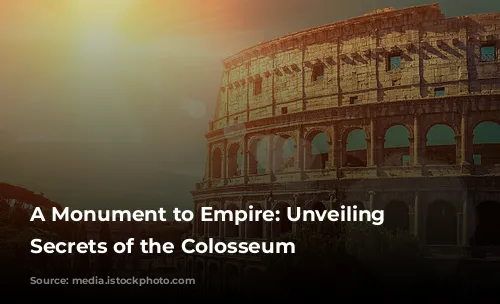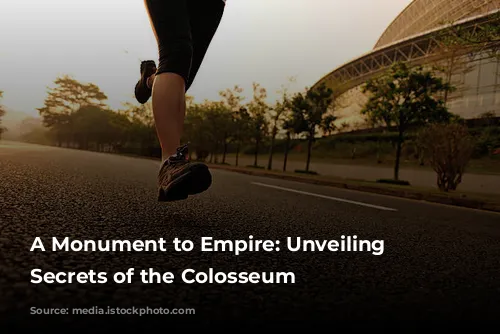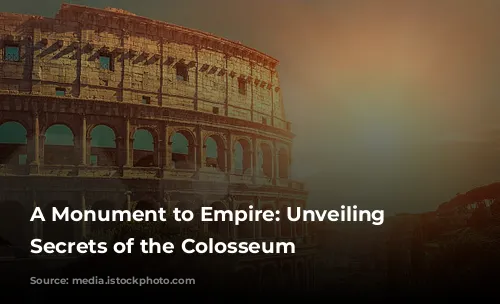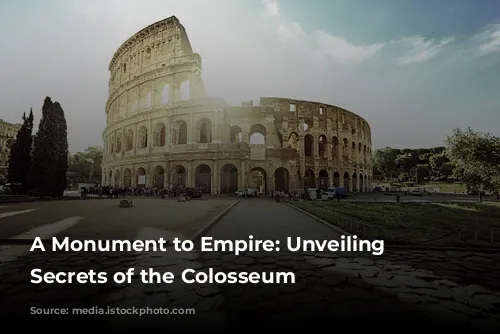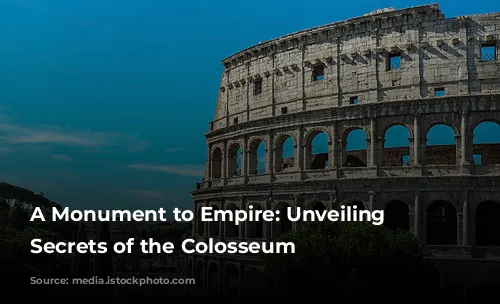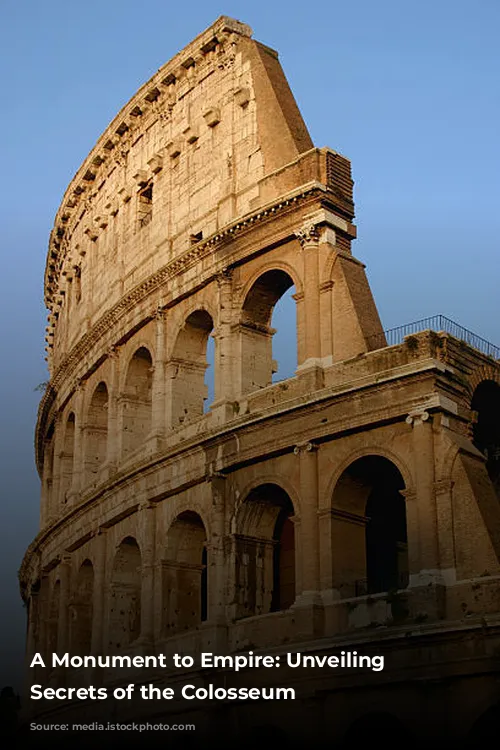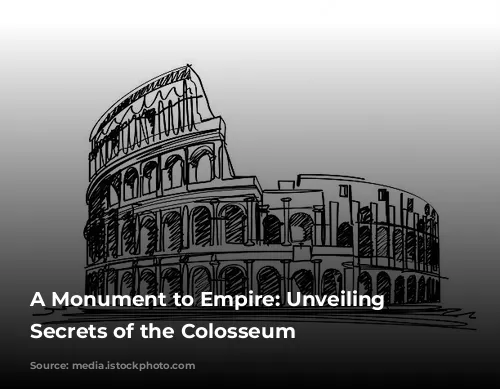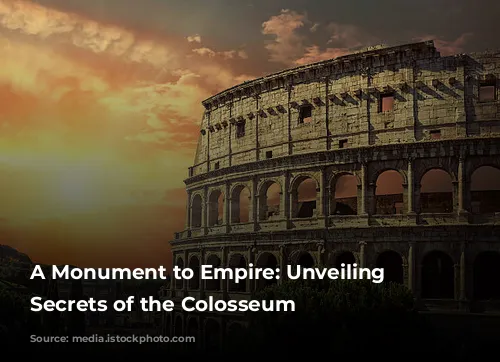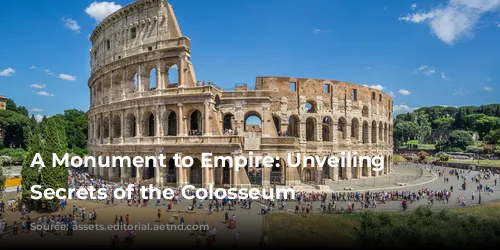Standing as a towering symbol of ancient Rome’s might, the Colosseum, or Flavian Amphitheater, is a testament to human ingenuity and the grandeur of an empire at its peak. While it’s often remembered for its brutal gladiatorial contests, the Colosseum’s legacy extends far beyond bloody spectacles. It’s a marvel of architecture and engineering, a powerful reminder of the Flavian Dynasty, and a cornerstone of Roman society.
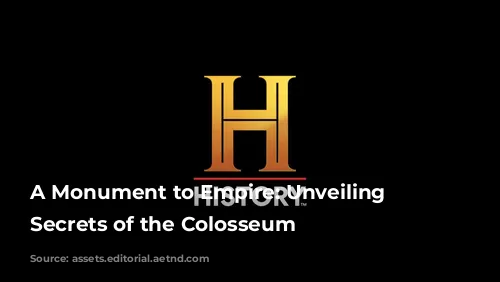
From Ashes to Arena: The Rise of the Colosseum
After the devastating fires, plagues, and civil wars that rocked Rome, Emperor Vespasian, founder of the Flavian Dynasty, embarked on a ambitious project to restore the city to its former glory. The Flavian Dynasty, comprising Vespasian and his sons, Titus and Domitian, invested heavily in revitalizing Rome’s infrastructure and public spaces. In 70 A.D., Vespasian, spurred by the spoils of war from the First Jewish-Roman War, ordered the construction of a new amphitheater in the heart of Rome. This ambitious project, completed a decade later, was the Colosseum, a dramatic symbol of Rome’s resurgence and a testament to the Flavian Dynasty’s vision.
The Colosseum was an architectural and engineering marvel, the largest and most sophisticated permanent amphitheater of its time. Made of concrete, travertine, marble, stone, and timber, it rose to a staggering 157 feet, equivalent to a 15-story building, and could accommodate an estimated 50,000 to 80,000 spectators.
The Colosseum’s strategic location on the site of Nero’s former estate, Domus Aurea, wasn’t an accident. Vespasian and his sons sought to erase Nero’s influence and establish their own legacy. They filled in the lake and demolished the colossal statue of Nero, using the space to build a structure that would forever symbolize their reign. The Colosseum’s name, derived from its proximity to the Colossus of Nero, further cemented its connection to the Flavian Dynasty’s ambition to redefine Rome.
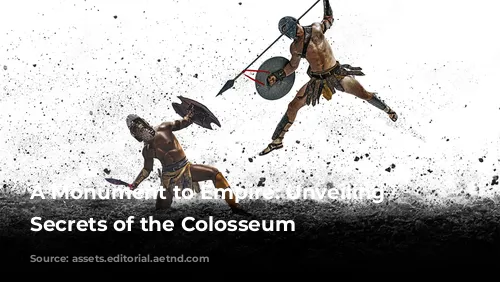
A Stage for Society: Order and Hierarchy in the Colosseum
The Colosseum was not merely a place of entertainment; it was a powerful statement of Roman social order. While Nero’s estate had been accessible to all, the Flavian Dynasty understood the importance of maintaining the rigid hierarchy that governed Roman society. By building the Colosseum, they ensured that the area remained a place of public enjoyment while reinforcing the social order through its seating arrangements.
Within the Colosseum’s walls, social status, wealth, and gender dictated an individual’s place. The best seats, nearest to the arena, were reserved for the Emperor and the elite senatorial class. Above them, the Equestrian Order, former cavalry members who had become merchants, artisans, and bureaucrats, occupied their designated space. The remaining 95% of Rome’s population, including women, foreigners, and the poor and enslaved, were relegated to the upper tiers.
The Colosseum’s ingenious design ensured order and control. Four entrances served the elite, while 76 gates facilitated the entry of ordinary citizens. Corridors separated social groups, preventing the mixing of classes. While seating was far from equal, the Colosseum’s elliptical architecture provided everyone with a view of the arena’s spectacles.
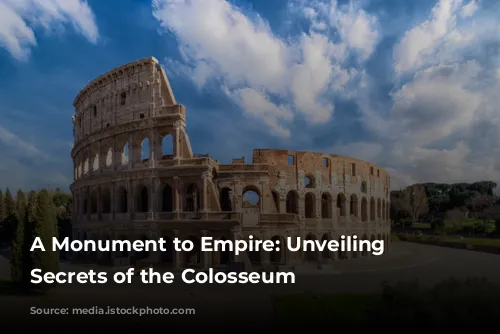
The Architectural Triumph of the Colosseum
The Colosseum’s grandeur wasn’t limited to its size and capacity; it was a masterpiece of architectural innovation. Most amphitheaters of the time were temporary wooden structures. The Colosseum, however, was a permanent stone structure, inspired by earlier Greek theaters and incorporating a series of columns, arches, and barrel vaults.
The Colosseum’s most significant innovation was its use of concrete. This revolutionary material allowed for the construction of a massive, permanent structure. The Colosseum’s solid concrete foundation, built in a wetland area with poor soil conditions, has allowed it to withstand the test of time for over 2,000 years.
Beyond its foundation, the Colosseum boasted an impressive array of technological marvels. A sophisticated drainage system enabled mock sea battles in the arena. Sailors operated a retractable awning, offering spectators protection from the elements. An intricate network of chambers and tunnels, known as the hypogeum, housed props, scenery, and participants. Trap doors, pulleys, and lifts facilitated dramatic entrances for combatants and scenery, adding an element of spectacle to the performances.

The Colosseum’s Hidden Costs: Labor and Finance
While the exact cost of building the Colosseum is unknown, scholars believe that a significant portion of the funding came from the spoils captured during the Roman conquest of Jerusalem. An inscription on the Colosseum states that the funds were derived from the sale of booty.
For years, it was widely believed that the labor force for the Colosseum was composed of 100,000 Jewish slaves captured during the Siege of Jerusalem. However, scholars question the veracity of this assertion, citing a lack of solid evidence. While it’s certain that a considerable number of slaves were involved in the Colosseum’s construction, their origins remain unclear.

A Legacy of Spectacle: The Colosseum’s Enduring Influence
The Colosseum is not only a window into ancient Rome’s social structure and engineering prowess, but it’s also the progenitor of modern outdoor stadiums. Its use of arches for support, its elliptical shape, and its system for controlling crowd flow based on seating location are all integral components of modern stadiums. The Colosseum stands as a timeless testament to human creativity and a enduring reminder of the power and influence of the Roman Empire.
